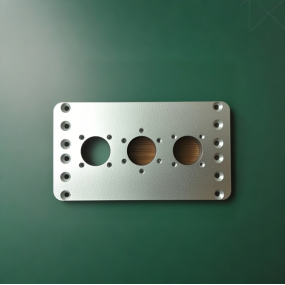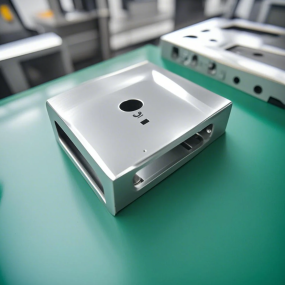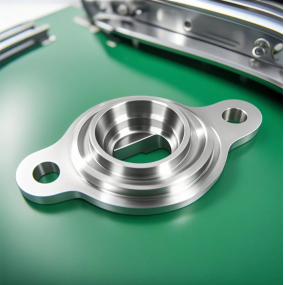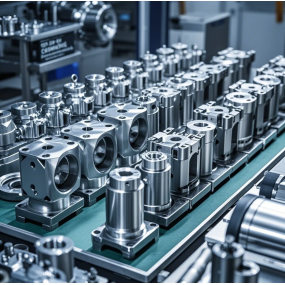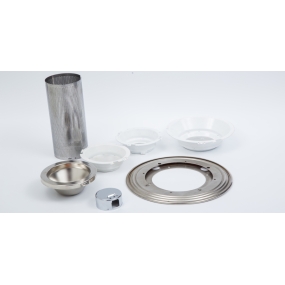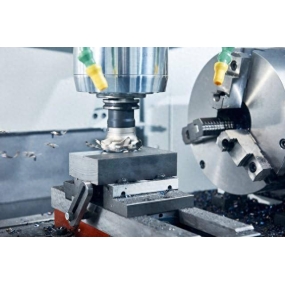1. Chassis cabinet shell processing raw material quality control plate selection: Chassis cabinet shell processing selects the appropriate plate according to the use environment and requirements of the chassis cabinet. For example, for general indoor chassis, cold-rolled steel plate is a commonly used material, which has good strength and processing performance. If the chassis cabinet needs to be used in outdoor environment, consider choosing galvanized steel plate or stainless steel plate with anti-rust ability. When choosing the plate, pay attention to the purity of its material, thickness tolerance and other indicators. Thickness tolerance should be controlled within a small range, such as 0.05mm, to ensure the dimensional accuracy of the chassis cabinet shell.  For some chassis cabinets that have requirements for electromagnetic shielding properties, materials with good conductivity should be selected, such as aluminum plates or copper plates. At the same time, the electromagnetic shielding effect can also be enhanced by plating conductive materials on the surface of ordinary steel plates. Material Inspection: Conduct a comprehensive quality inspection of the purchased plates. Including appearance inspection to check whether there are scratches, dents, oxide scales and other defects on the surface of the plates. For example, the surface of cold-rolled steel plates should be flat and smooth without obvious defects, otherwise it will affect the appearance quality of the chassis cabinet shell. Material performance testing should also be carried out, such as testing the yield strength, tensile strength and other mechanical properties of the plates through tensile testing to ensure that they meet the design requirements. For plates that do not meet Quality Standards, they will not be used resolutely. 2. Chassis cabinet shell processing process Optimization of cutting process: Precision control: Chassis cabinet shell processing When cutting plates, high-precision cutting equipment is used, such as laser cutting machine or numerical control plasma cutting machine. Laser cutting has the advantages of high precision, high speed and good quality of cutting surface. The cutting accuracy can be controlled within 0.1mm, which can meet the cutting requirements of the complex shape of the chassis cabinet shell. Numerical control plasma cutting machine is suitable for cutting thicker plates. The cut edge should be polished to remove the oxide layer and burr, so that the cutting edge is smooth and flat. Cutting path planning: rationally plan the cutting path to reduce the thermal deformation during the cutting process. For example, for a large area of plate cutting, partition cutting or skip cutting is used to avoid heat concentration in a certain area causing plate deformation. At the same time, according to the thickness and material of the plate, adjust the cutting parameters, such as laser cutting power, speed and gas pressure, etc., to obtain the best cutting effect. Bending Process: Mold Selection and Adjustment: Select the appropriate bending die according to the design requirements of the cabinet shell of the chassis. The accuracy and quality of the bending die directly affect the accuracy and quality of bending. Before the bending operation, the mold should be accurately installed and adjusted to ensure that the gap of the mold matches the thickness of the plate. For example, for a 1.5mm thick steel plate, the gap of the bending die is generally controlled between 1.5 - 1.6mm, which can ensure the flatness and angle accuracy of the bending place. Bending Parameter Optimization: Optimize the bending parameters through testing and simulation, such as bending pressure, bending speed and bending angle, etc. The accuracy of the bending angle should be controlled within 1 to ensure that the various parts of the cabinet shell of the chassis can be accurately spliced. During the bending process, pay attention to the fiber direction of the plate, and try to make the bending direction consistent with the fiber direction of the plate to reduce the risk of cracking at the bending place.
For some chassis cabinets that have requirements for electromagnetic shielding properties, materials with good conductivity should be selected, such as aluminum plates or copper plates. At the same time, the electromagnetic shielding effect can also be enhanced by plating conductive materials on the surface of ordinary steel plates. Material Inspection: Conduct a comprehensive quality inspection of the purchased plates. Including appearance inspection to check whether there are scratches, dents, oxide scales and other defects on the surface of the plates. For example, the surface of cold-rolled steel plates should be flat and smooth without obvious defects, otherwise it will affect the appearance quality of the chassis cabinet shell. Material performance testing should also be carried out, such as testing the yield strength, tensile strength and other mechanical properties of the plates through tensile testing to ensure that they meet the design requirements. For plates that do not meet Quality Standards, they will not be used resolutely. 2. Chassis cabinet shell processing process Optimization of cutting process: Precision control: Chassis cabinet shell processing When cutting plates, high-precision cutting equipment is used, such as laser cutting machine or numerical control plasma cutting machine. Laser cutting has the advantages of high precision, high speed and good quality of cutting surface. The cutting accuracy can be controlled within 0.1mm, which can meet the cutting requirements of the complex shape of the chassis cabinet shell. Numerical control plasma cutting machine is suitable for cutting thicker plates. The cut edge should be polished to remove the oxide layer and burr, so that the cutting edge is smooth and flat. Cutting path planning: rationally plan the cutting path to reduce the thermal deformation during the cutting process. For example, for a large area of plate cutting, partition cutting or skip cutting is used to avoid heat concentration in a certain area causing plate deformation. At the same time, according to the thickness and material of the plate, adjust the cutting parameters, such as laser cutting power, speed and gas pressure, etc., to obtain the best cutting effect. Bending Process: Mold Selection and Adjustment: Select the appropriate bending die according to the design requirements of the cabinet shell of the chassis. The accuracy and quality of the bending die directly affect the accuracy and quality of bending. Before the bending operation, the mold should be accurately installed and adjusted to ensure that the gap of the mold matches the thickness of the plate. For example, for a 1.5mm thick steel plate, the gap of the bending die is generally controlled between 1.5 - 1.6mm, which can ensure the flatness and angle accuracy of the bending place. Bending Parameter Optimization: Optimize the bending parameters through testing and simulation, such as bending pressure, bending speed and bending angle, etc. The accuracy of the bending angle should be controlled within 1 to ensure that the various parts of the cabinet shell of the chassis can be accurately spliced. During the bending process, pay attention to the fiber direction of the plate, and try to make the bending direction consistent with the fiber direction of the plate to reduce the risk of cracking at the bending place.
Hello! Welcome to EMAR's website!
 English
English » »
» »
 Spanish
Spanish Arabic
Arabic French
French Portuguese
Portuguese Belarusian
Belarusian Japanese
Japanese Russian
Russian Malay
Malay Icelandic
Icelandic Bulgarian
Bulgarian Azerbaijani
Azerbaijani Estonian
Estonian Irish
Irish Polish
Polish Persian
Persian Boolean
Boolean Danish
Danish German
German Filipino
Filipino Finnish
Finnish Korean
Korean Dutch
Dutch Galician
Galician Catalan
Catalan Czech
Czech Croatian
Croatian Latin
Latin Latvian
Latvian Romanian
Romanian Maltese
Maltese Macedonian
Macedonian Norwegian
Norwegian Swedish
Swedish Serbian
Serbian Slovak
Slovak Slovenian
Slovenian Swahili
Swahili Thai
Thai Turkish
Turkish Welsh
Welsh Urdu
Urdu Ukrainian
Ukrainian Greek
Greek Hungarian
Hungarian Italian
Italian Yiddish
Yiddish Indonesian
Indonesian Vietnamese
Vietnamese Haitian Creole
Haitian Creole Spanish Basque
Spanish Basque


